
Parents, how many times have you seen your child’s math score get pulled down due to careless mistakes? This is especially true when students go to upper elementary and need to integrate more concepts and procedural skills as they solve more advanced math problems. Understanding what the common 4th Grade math mistakes are and how to avoid them is a good way to prevent losing points on a test. To help your child avoid these mistakes, we’ve started the “Top 3 Common Math Mistakes to Avoid” series.Here are the top 3 common mistakes in 4th Grade and how children can avoid them!
Since more advanced math problems often involve multiple steps to arrive at a solution, and given that these steps are all interconnected, students only need to make one mistake to result in getting the entire problem wrong. This can be frustrating for both parents and children. Here’s som tips to stop making the mistakes and ace the next test.
Common Mistake 1: Conversions of Fractions to Decimals (involving rounding decimals)
Decimals are one of the major topics students learn in 3rd Grade and must carry with them into 4th Grade. A decimal is a number that consists of a whole and a fractional part. Decimal notation always includes a decimal point (e.g. 3.55). For questions relating to decimals, students should pay close attention to the decimal point. They should be familiar with converting decimals to fractions and vice versa. Conversion of decimals is a common question that usually comes up in tests and exams.
Common Mistake
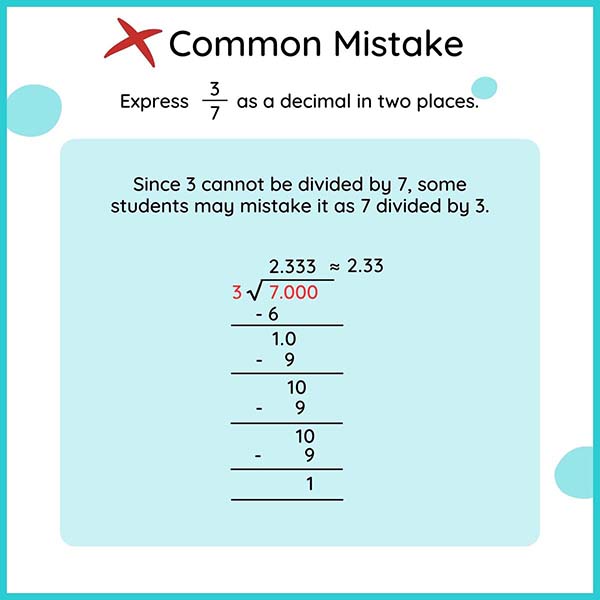
Solution
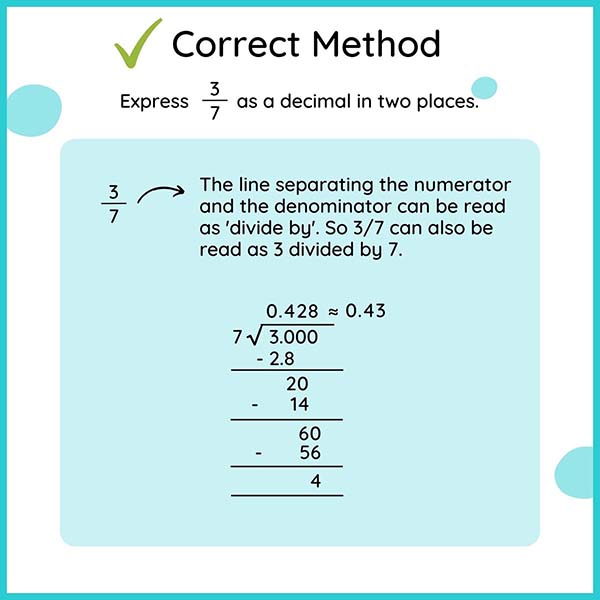
How to prevent this mistake
For questions that involve the conversion of fractions to decimals, it tests students’ knowledge of both concepts. Students will need to tap into their understanding of both decimals and fractions. One important tip to remember is the line in a fraction can be understood as “divide by”. Therefore, the numerator is to be divided by the denominator.
Common mistake 2: Assuming Values on Number Line
A number line is a common picture representation that can be seen in math questions. It is a straight line that visually represents a number on each point. Number lines can be used to represent various types of numbers, such as integers, fractions, decimals, and more. They are useful in helping students visualize numbers and add/subtract or multiply/divide numbers more easily. This is also one area where students may make careless math errors.
Common Mistake
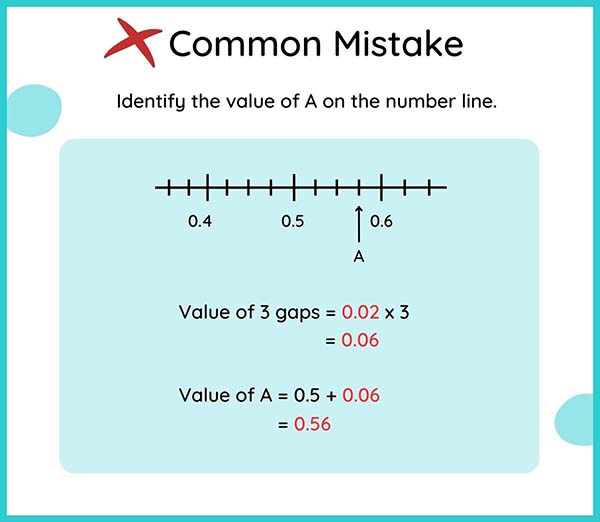
Solution
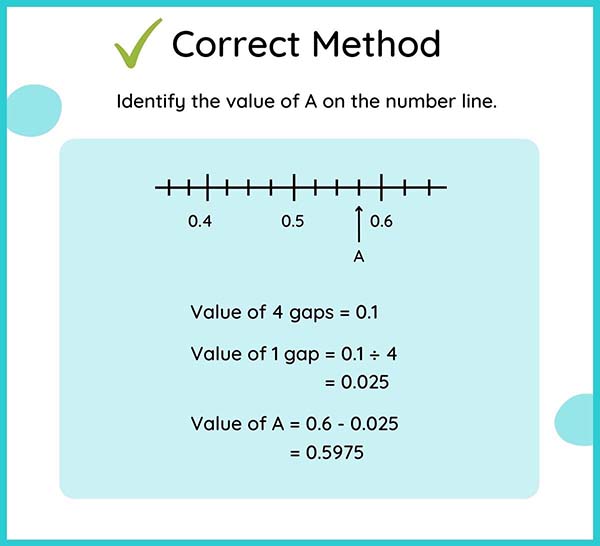
How to prevent this mistake
Questions like these test a student’s ability to add, subtract, multiply, and divide decimals. At higher levels, not every unit on the number line will be marked with a corresponding value, and students are expected to identify the value of unknown units on the number line. Students may be used to number lines with 5 gaps in between two intervals, and incorrectly assume each gap has a value of 0.02 here. This is where it leads to a math error, as the number line in this question actually has only 4 gaps and not 5.
When doing a number line question, always remember to check the value at the two intervals and the number of gaps in between. Identifying the value of the unknowns is crucial, so this is a step all students should make sure to do.
Common mistake 3: Finding time in 24-hour clock
4th Grade could be the first time students are introduced to the idea of a 24-hour clock. For such time-related questions, they commonly ask about time differences between countries. To tackle this type of question, students should get familiar with calculating time differences and what to look out for in the process.
Common Mistake
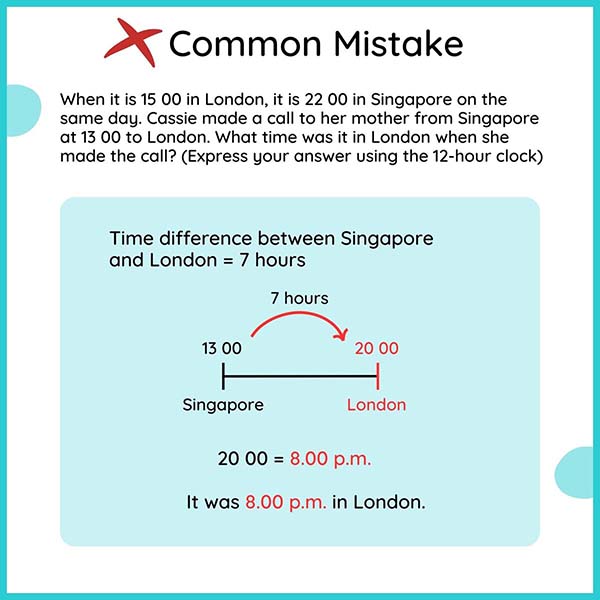
Solution
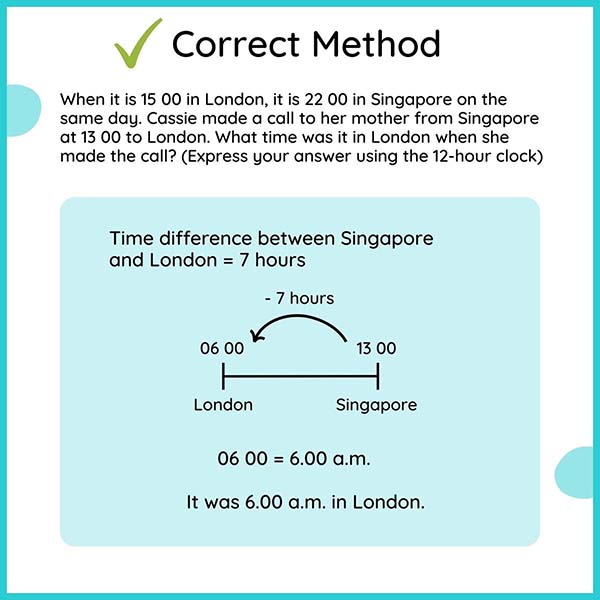
How to prevent this mistake
Understanding the word problem and knowing what steps to take is important here. Let’s take a look at the question above in detail. Since the time in London is 13:00 on the same day compared to 22:00 in Singapore, London is behind Singapore by 7 hours. If we are to find the time in London, we should subtract the time difference and count backward. The key here is to interpret the question correctly and ensure that students take the proper steps to calculate the answer. Drawing a timeline will also help students to visualize and understand the question better.
Overcome mistakes and become a math ace with Spark Math!
In 4th Grade, your child may still be adjusting to the upper primary math curriculum. Questions are more complex and require more steps to complete. Students should also master techniques such as drawing number lines to help visualize word problems. With practice, students can learn the common mistakes that appear in P4 math topics and keep an eye out for them. These tips from Spark Math will give students the boost they need in their revision to help them achieve their goals.
At Spark Math by Spark Education, children can look forward to an immersive and fun experience where they learn math through play! There’s a variety of animation, engaging storylines, and gamification elements to enrich the learning experience. Interested in snagging a free trial class for your child? Sign up here and start your child’s math journey today.
Check out these other articles in our “Common Math Mistakes and How to Avoid Them” series:
Kindergarten – 1st Grade – 2nd Grade – 3rd Grade – 4th Grade – 5th Grade




